Smart Growth: Top U.S. States Driving QSR Growth — A Strategic Look at 2025
.webp)
If you're running a QSR in 2025, you're not just managing food costs and labor. You're navigating tax rules, expansion decisions, compliance paperwork, and trying to stay profitable across multiple locations. And you're not alone.
The U.S. QSR market is expected to grow from $1.05 trillion today to $1.93 trillion by 2032. That kind of growth doesn’t just happen in spreadsheets. It happens in places like Georgia, Florida, and Arizona — where operators are adding stores, testing new formats, and competing on speed, service, and margins.
But if there’s one thing growth operators know, it’s this: new markets bring new risks. Every state has its own mix of taxes, labor rules, and reporting requirements. That’s where the right systems, especially your POS, can make or break your expansion.
Let’s walk through the ten U.S. states where QSRs are booming — and what it really takes to grow smart in each one.
1. California: Growth Meets Complexity
With more than 68,000 restaurants, California leads the country in volume and diversity. But it’s also one of the most complex states to operate in.
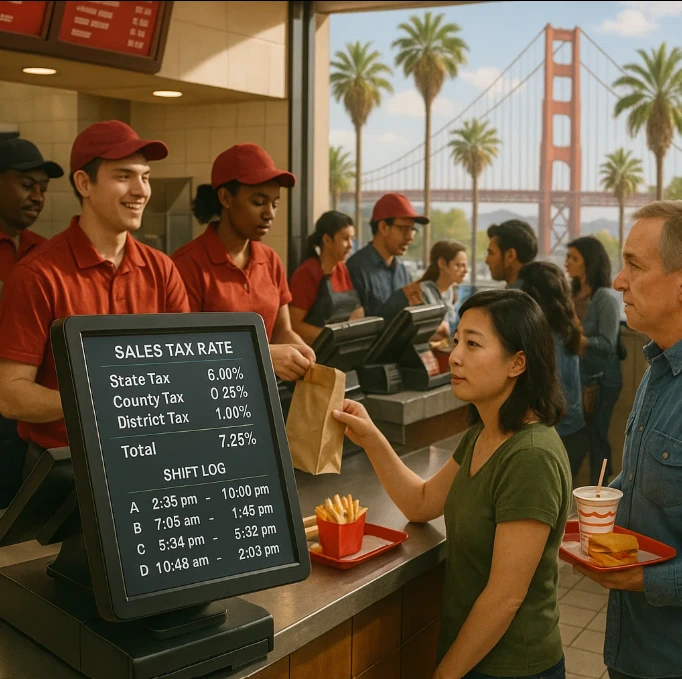
Why operators are expanding here:
- Huge, tech-forward consumer base
- Premium QSR concepts perform well
- Market size and density create strong unit economics
What to watch:
- The 80/80 rule can mean you pay tax on 100% of sales
- Base 7.25% state tax plus local jurisdictions reaching 10.75%
- Labor law triggers start daily after 8 hours, not weekly
- Meal and rest break rules are enforced strictly
What helps:
A POS that supports manual tax configuration, logs break compliance, and helps manage employee shifts without surprises.
2. Texas: Lean Regulations, Strong Demand
44,177 total restaurants, projected 3.3% franchise growth rate in 2025. Texas offers one of the most business-friendly environments in the country, which is why thousands of franchisees are choosing to scale here.
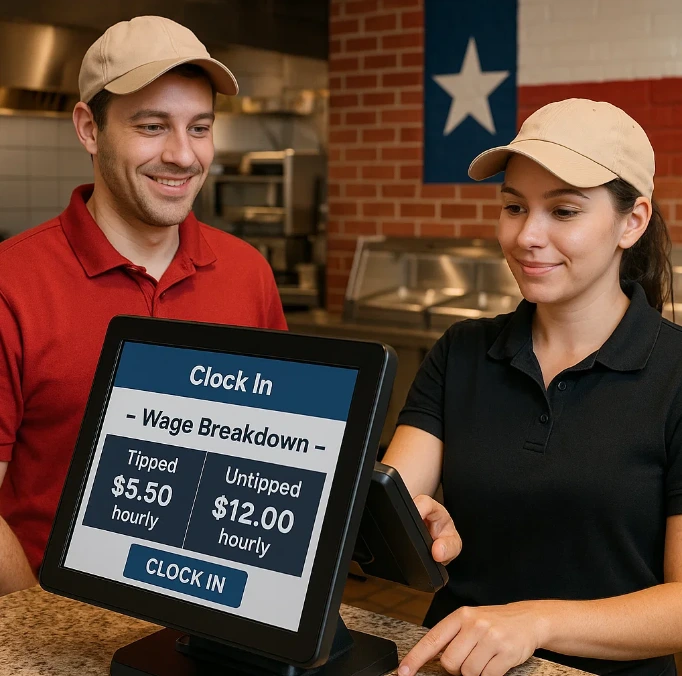
What’s driving growth:
- No state income tax
- Expanding urban markets
- Fast-growing consumer base
Key compliance factors:
- Tip credit rules: $2.13/hour for tipped staff
- Local sales taxes vary up to 8.25%
- Simple overtime rules, but poor tracking can still cost you
What helps:
A POS that can cleanly separate tipped and hourly staff, map local taxes, and produce clean payroll exports.
3. Florida: The Volume Game
Florida has nearly 35,000 restaurants and continues to add thousands more. But tourism-driven growth brings its own set of challenges.
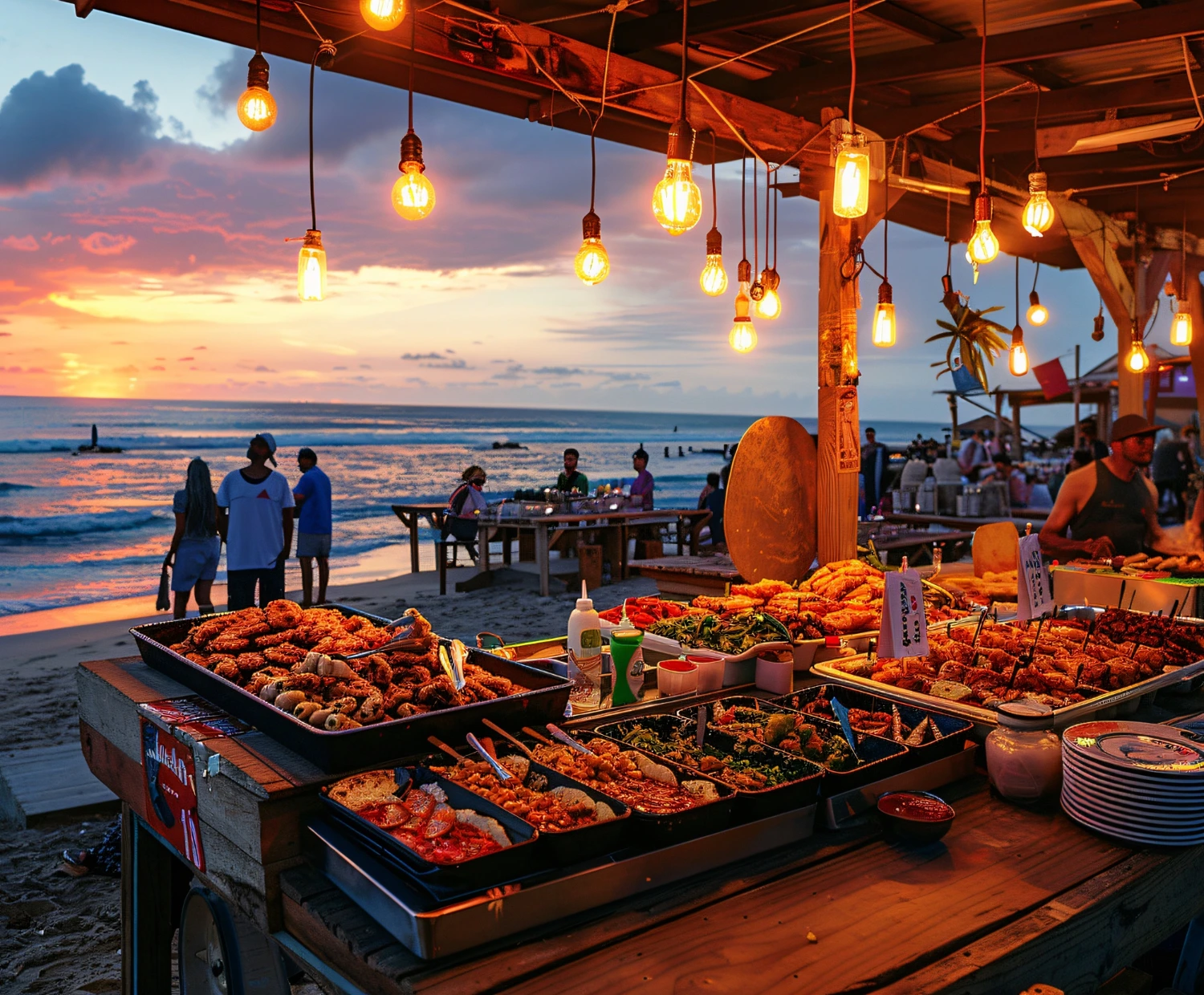
Why it’s booming:
- No state income tax
- Strong tourism and delivery demand
- Fast migration growth
Where operators get stuck:
- Tax on prepared meals (but not always cold items)
- County surtaxes vary by location
- No required breaks, but federal labor rules still apply
What helps:
Menu-level tax mapping, flexible scheduling, and audit-ready labor tracking from your POS.
4. New York: Premium Market, High Stakes
In cities like New York, consumers spend more — but so do operators who don’t understand the compliance landscape. 34,359 total restaurants, strong urban density supporting high per-capita spending.

Why QSRs choose NY:
- High per-capita spending
- Strong urban density
- Brand visibility in premium markets
What makes it tricky:
- Fair Workweek laws require advance scheduling, recordkeeping, and predictability pay
- Minimum wage rules vary
- Health grade impacts traffic and ratings
What helps:
Labor forecasting tied to sales data, scheduling tools built into your POS, and clear audit logs for every shift.
5. North Carolina: The Scalable Option
14,455 total restaurants and #2 state for franchise growth in 2025. This state is a quiet winner for QSR growth. It doesn’t have California’s complexity or New York’s premiums, but it’s easy to scale here.

What’s working for operators:
- Strong franchise growth
- Raleigh and Charlotte are key metros
- Business-friendly state oversight
What to know:
- No mandatory meal/rest breaks for employees 16 and older, but must provide 30-minute break for under-16 employees after 5 hours of work
- State follows federal labor law, but reporting matters
What helps:
Role-based permissions in your POS, plus shift-level logging that keeps records clean and audit-ready.
6. Georgia: America’s Franchise Capital
15,864 total restaurants and #1 state for franchise growth in 2025 with 6.7% projected growth. In 2025, Georgia is expected to lead the U.S. in franchise growth. The state is making it easy for QSRs to plant their flag.

Why it’s a top pick:
- Affordable cost of entry
- Streamlined regulatory processes supporting rapid expansion
- Atlanta's infrastructure
- $37 billion+ in franchise economic output
What to manage:
- No surprises, but clean reporting is essential
- Regulatory process is fast, but unforgiving if neglected
What helps:
Centralized menu management, clear daily closeouts, and customizable tax and payroll reporting.
7. Arizona: Strong Growth, Unique Taxes
9,170 total restaurants and #4 state for franchise growth in 2025. Arizona is expanding fast, but its tax system operates differently than most states. Many operators miss this during early setup.
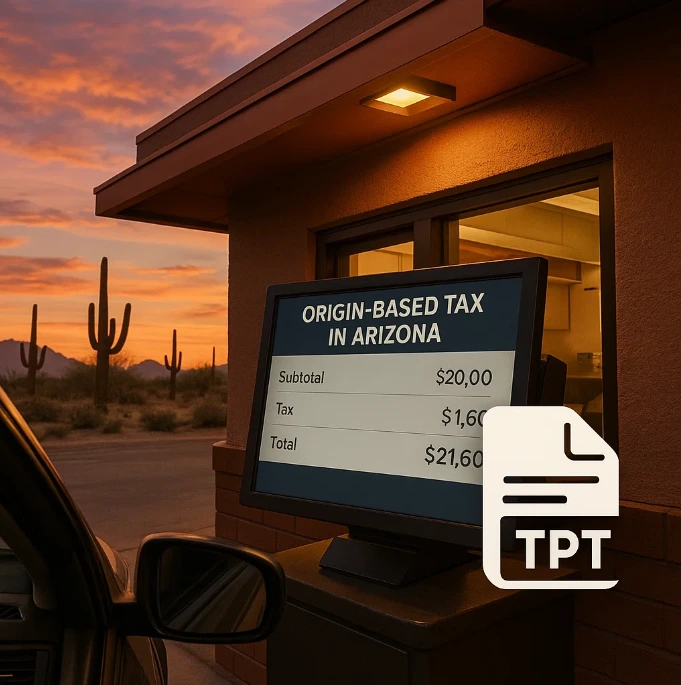
Why chains are expanding here:
- Metro growth in Phoenix and Tucson
- Yuma among top franchise growth markets
What’s different:
- Origin-based tax system (tax based on seller’s location)
- TPT adds another layer of local variation
- Hot meals, sandwiches, and food served with tableware are taxable
What helps:
A POS that handles origin-based taxes and allows for manual overrides based on exact address and product category.
8. Virginia: High Growth, High Stability
12,166 total restaurants and #3 state for franchise growth with 6.00% projected growth in 2025. Virginia is close to several metro markets, and it’s expected to add over 1,400 franchise businesses this year alone.

What’s appealing:
- Diverse workforce
- Balanced urban-suburban spread
- Business-friendly incentives for multi-unit operators
What to keep in mind:
- High growth doesn’t mean low risk — reporting still matters
- Payroll and gross revenue reporting must be accurate
What helps:
QuickBooks integrations, cloud backups, and centralized dashboards for region-wide oversight.
9. Pennsylvania: The Reliable Middle Ground
With over 18,000 restaurants, Pennsylvania is a mature QSR market — but still open to new formats and delivery-first models.
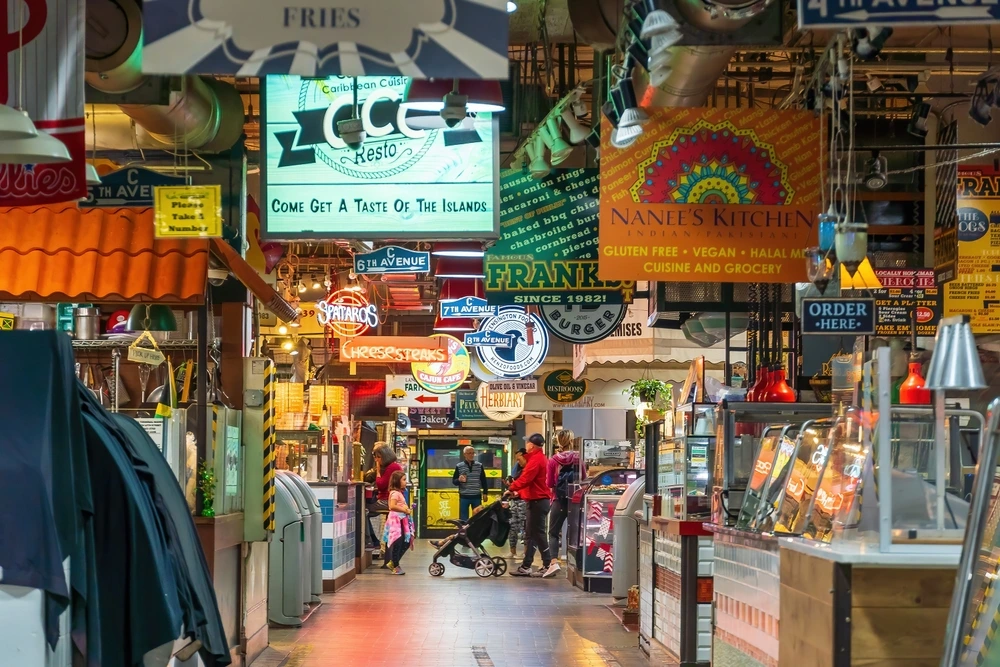
Why it’s attractive:
- Access to urban consumers
- Cost-effective second markets (e.g., Allentown, Harrisburg)
- Established delivery infrastructure
Where things get tricky:
- Tip credit rules apply only if employees make more than $135/month in tips
- Overtime after 40 hours
- Wage compliance is monitored closely
What helps:
Tip pooling features, pay threshold alerts, and state-by-state reporting are must-haves in your POS.
10. Tennessee: Low Overhead, Fast Decisions
10,118 total restaurants and #7 state for franchise growth in 2025. Tennessee offers simple tax structures and favorable regulations, which is why franchise groups are expanding here aggressively.

Why QSRs are scaling fast:
- No income tax
- Favorable thresholds for business tax
- Strong growth in Nashville and secondary cities
What operators need to handle:
- Franchise tax (0.25% on net worth)
- Higher reporting requirements once you cross $100K gross receipts
What helps:
A POS that tracks store-level revenue cleanly and helps you plan taxes before the year ends.
What Smart Operators Look for in a POS System Today
Growth is exciting — but it comes with risk. If your POS system doesn’t support multi-state operations, compliance automation, or audit preparation, it may slow you down more than it helps.
.webp)
.webp)
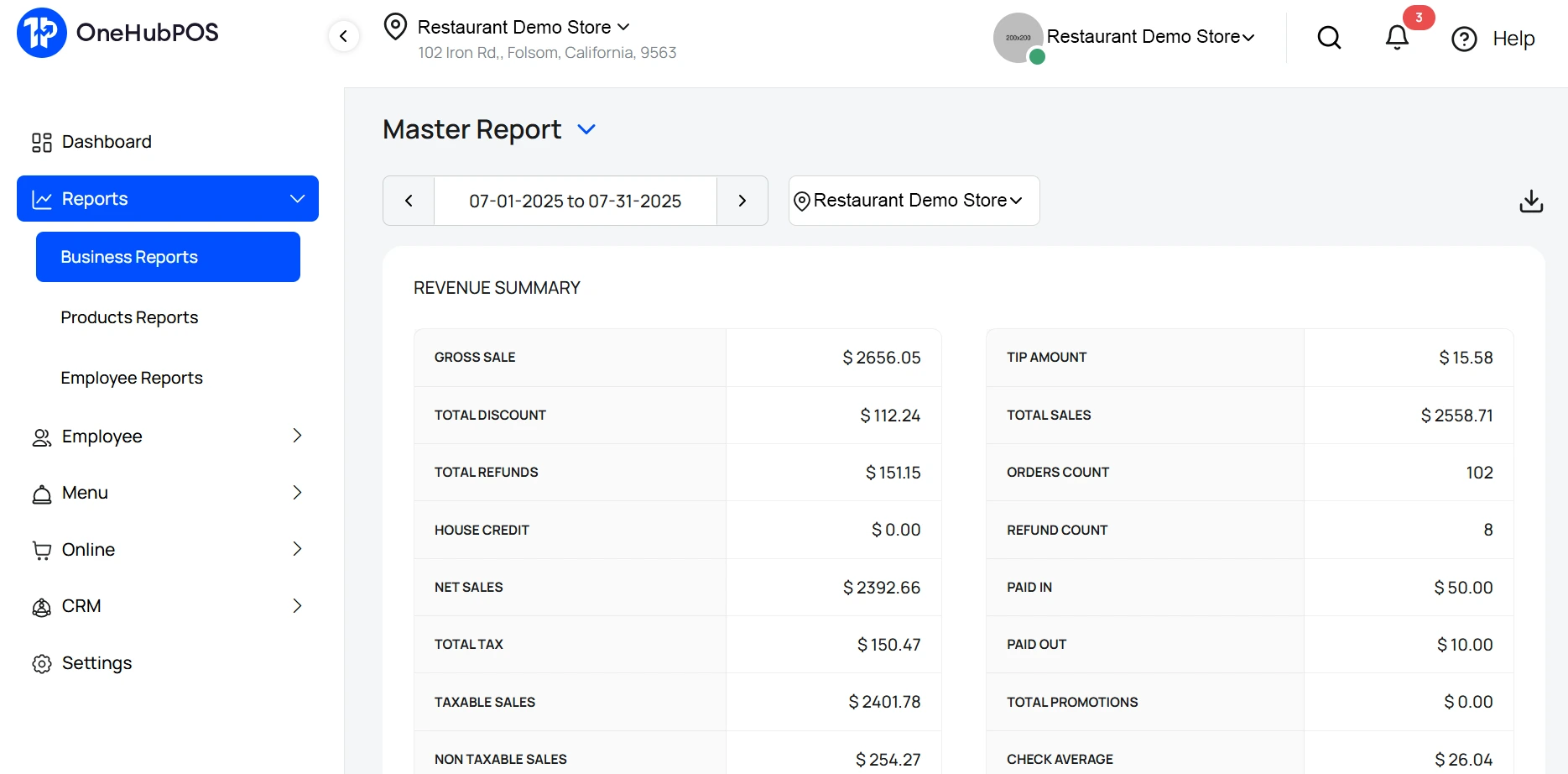
Here’s what multi-location QSR owners are demanding in 2025:
Final Thoughts: You Can’t Scale What You Can’t See and Control
Expansion without compliance is a gamble. Growth-focused QSRs don’t just think about their next location — they think about what each state demands, how their team operates, and whether their tools support them at scale.
That’s where OneHubPOS fits in. Our system is designed for operators who want full visibility, manual control where it matters, and integrations that simplify the back office.
If you’re ready to grow without losing sleep over labor rules or tax deadlines, we’re ready to show you how.
Talk to our team to see how OneHubPOS supports multi-location QSRs that want to move fast — and stay compliant.
Roopak Chadha, Director of Business Development with expertise in Business Growth & Strategy, Customer Success, and Product Management. Excels in driving business growth through strategic planning, customer-centric approaches, and effective operational leadership.


